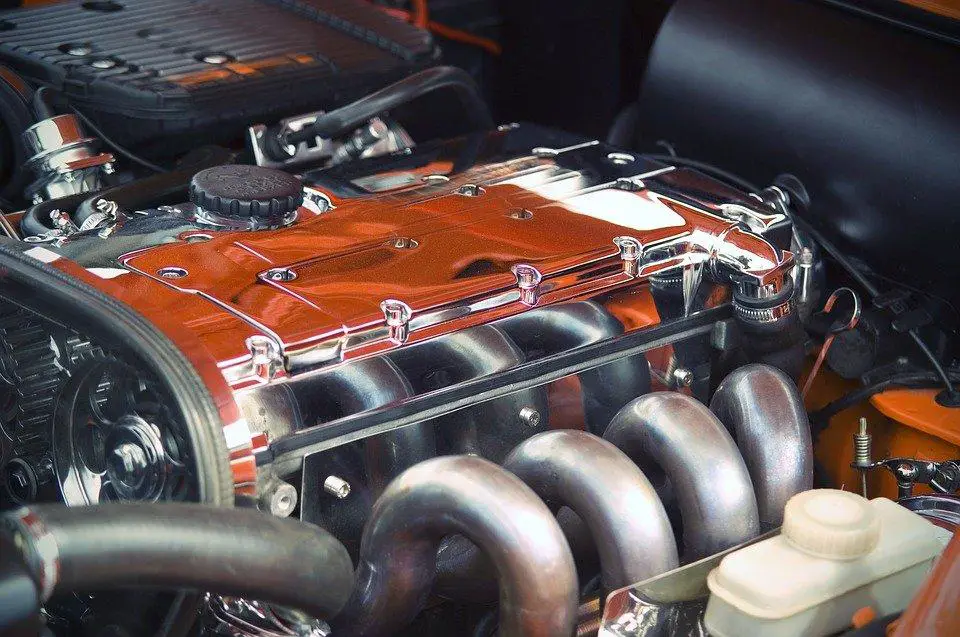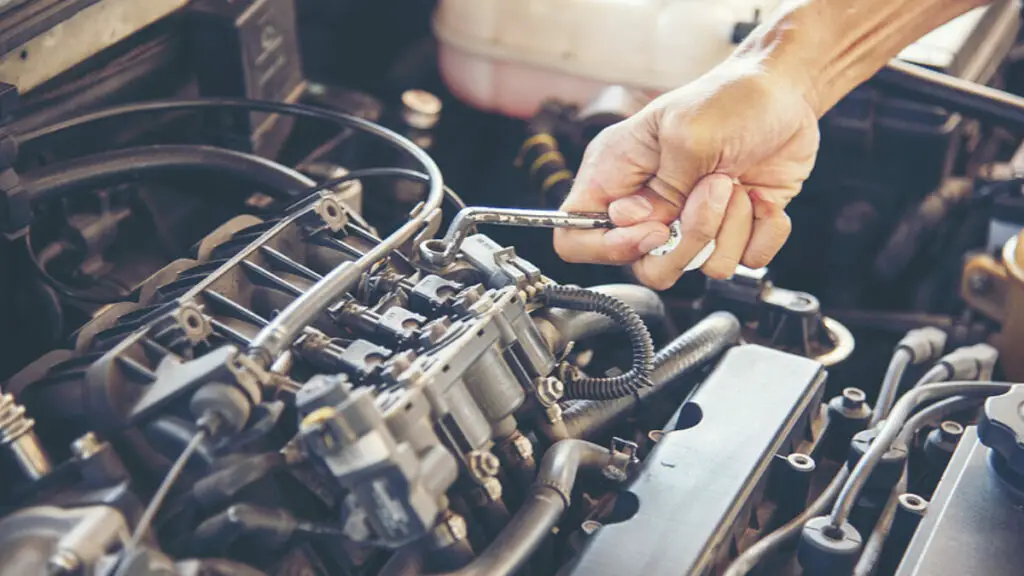When your car turns over but won’t start or run, it means that its engine is facing a few problems in creating a spark. Not getting enough fuel or not being able to create compression are a few of the reasons for this issue.
Maybe it’s the ignition switch coil or a clogged fuel line or filter. Or it might be a mechanical fault due to some leaking valves or other faulty components.
Let’s see how you can handle the issue when your car is turning over but won’t start and get your car to turn over and start and resolve the no start issue!

What If the Engine Isn’t Cranking Normally?
If your car Is turning over but won’t start it doesn’t necessarily mean that there is a problem with the starter motor. If your engine cranks normally then there isn’t a starting problem. Number two, if the engine is not cranking right, it might be rotating slowly or it might not rotate at all.
You might also hear very weird noises when you try to start your engine. But in this scenario, you need to troubleshoot your car’s engine system and that is not covered in the ambit of this topic.
But make sure if the engine cranks but not start you don’t crank your engine too many times to get it to fire up. This way you will end up draining all your battery and also damage the starter motor while doing it. You should do it with the charger that your battery is left with and try to locate the fault.
The 6 Quick Checks
- Before doing something, first of all, you need to check whether there is enough fuel in the gas tank or not. Fuel level is one of the possible causes. Bad fuel can be an issue that most people ignore.
- Modern vehicles come with sensors and actuators that are operated with computers. Therefore, you need to scan your engine computer memory and try to get to those trouble codes. This is a good way to power up.
You can even do this if the check engine light hasn’t turned on. There might be false input from these sensors that can prevent the engine from starting up, causing the check engine light not to turn on. These sensors include the likes of the crankshaft position sensor or camshaft position sensor as well as the throttle position sensor. The camshaft sensor is critical and it can turn on the security light as well as you turn the ignition key.
- If your engine cranks slowly but the car won’t start slowly then you might be having problems with a discharged battery or bad battery terminals or battery cables. You might also have corroded battery terminals or plug wire.
- Issues with the starter motor circuit can also prevent your engine from starting up. Here you need to check the circuit voltage drop or can also check the starter motor check. Always pay special attention to any of that unusual noise when you are cranking your engine.
- Modern-day vehicles also come with an engine immobilizer with a security system to prevent car theft. Maybe the security system of your car has faltered and it has disabled the ignition coil system or fuel system. You can always consult your owner’s manual for your car alarm or get in touch with the service that installed your alarm system.
- And don’t forget to check for any blown fuses that might be preventing a circuit from functioning properly if the car won’t start. You might run a check on your computer system or your fuel injection.
Car Is Turning Over But wont Start – Troubleshooting The 3 Systems
For proper operation, gasoline engines with internal combustion have to spark and with the right amount of fuel as well as compression which is a healthy mechanical condition. If anyone of these three things is lacking then your engine will not start.
Is there any spark or not in the ignition coil?
Spark plugs are an integral component of the spark system of your vehicle. These spark plugs need to be in their top condition to work properly. The first thing that you need to check is whether there is any spark or not and whether it is reaching the cylinders or not if the engine turns over but won’t start.

And you can run this check without using your spark tester, but we would still recommend that you use it. A weak or missing spark can prevent your engine from starting up. You can use an adjustable tester so you can check any spark of 10 kV, 30 kV, or 40 kV.
- Choose an easily accessible spark plug and unplug it.
- Now, set your spark tester to 40 kV and plug it in, now hook your test light to the engine ground. For grounding the tester you have to use an unpainted bolt or bracket on your engine.
- While keeping an eye on the tester, you need to have someone to assist you to crank the engine.
- Make sure that you see a bright jump in the spark tester.
Worn out spark plugs can cause this problem. These spark plugs need to be replaced immediately. If there is no spark, then you can always run the test again. But set your spark tester to be at 30 kV, and if you still don’t see a spark then set it to 10 kV.
If you still don’t see a spark then there is a problem with your ignition system. You might have a problem with the distributor, ignition coil, igniter, ignition switch module, or any other related part of the entire ignition system. A worn-out ignition coil pack is one of the most common problems as well.
Is the fuel reaching your cylinders?
Once you are done with your spark, you have to check whether the fuel is reaching the cylinders or not.

Checking the throttle body injection or carburetor
- Look at your air filter box and take its lid off. Now, open its throttle plate and check the fuel injector.
- Ask your helper to crank but not start the engine for you and see whether the unit is receiving the fuel from the injector or not.
- If there is no fuel injection then there is an issue with the fuel engine.
In such a scenario you have to make sure whether there is enough fuel in the tank and that it is working properly and is not clogged. Also, check whether the fuel pressure regulator is in working condition and see if the fuel injectors are not clogged.
Checking the multiport fuel pump system before you turn the key
- You have to make sure that the fuel line is working or not. For a few moments, you can remove that cap of the fuel filter.
- Seek some assistance in turning the ignition system key in “on” position but don’t start the car.
- As the key is being turned closely listen through the filter neck of the fuel tank of your car. If there is no whirring sound then you have a faulty fuel pump relay or fuel pump. There might be an issue of a blown fuse box or an electrical open. You might need a charging system or jumper cables especially for the push-button start system to get to the root cause of the issue.
- Detach the air cleaner and open the throttle plate. Spray some starter fluid on the piston rings and then crank the engine does use a scan tool as most car owners do.
- If the engine turns over but won’t start then the fuel is getting into the cylinders and the cause of the problem is somewhere else. But if the engine starts and dies again, then fuel is not getting into the cylinders, and you need to look for a clogged fuel pump or a poor pressure regulator.
- In case if the fuel line going to the injectors features a test port then with the help of a screwdriver you need to press on the valve.
- You can turn the key “on” for a couple of seconds and then turn the key off. Repeat this step a couple of times to get the fuel into the lines.
- After that press, the valve into the screwdriver, and the fuel should squirt out from the valve. If there is a dribble or there is no fuel then there is a clogged fuel filter or fuel pump.
- You can also compare the pressure gauge reading using the repair manual of your car. If the pressure is low then there’s a problem with the fuel pump system. And you need to detach the vacuum hose from the pressure regulator. If this line is wet and it smells like fuel then you need to replace the pressure regulator.
- Some cars also automatically shut off the fuel line after a crash to prevent fire. You can check the repair manual of your car to see for a switch that allows you to turn it back on.
Is the compression okay?
With properly working compression, it will heat up the air-fuel mix within the cylinder and allows the spark to ignite this mixture to make sure that combustion can take place. During this process there shouldn’t be any air leaks or the combustion will be weak or it won’t happen at all.

Air leaks occur due to a jumping timing chain or timing belt which might allow the chain to escape some air through the valve. This chain or belt syncs with the rotation of the crankshaft position sensor or camshaft position sensor. It tends to wear out over time and tends to break.
Hence, car manufacturers recommend changing the timing belt after 5 years. You can also look for some special instructions provided to you in the repair manual of your car.
Similarly, you can also check compression pressure with the help of a compression gauge. If your car has a gasoline engine then you can screw the gauge into the hole of one of the spark plugs. In the case of a diesel engine, you need to screw the gauge into the injector nozzle. Also, consult the repair manual of your car for this.
The compression range for a gasoline engine is between 130 to 180 PSI (pounds per square inch). While for a diesel engine it ranges between 250 and 400 PSI. make sure the engine is running once you get it to start
Final Word – Car Turns Over But wont Start
You have to check for the three systems in your car if your car engine turns over but won’t start. First of all, look for the spark, the fuel pump system, and the compression in your vehicle to make sure everything perks properly and your engine starts. Keep the safety switch in access at all times.
Other components that might contribute to this issue include your exhaust gas recirculation, cold injector, manifold absolute pressure, mass air flow, engine coolant temperature canister vent valve throttle position sensor, crank sensor, vacuum leaks, and carburetor.
Make sure that you consult your car’s repair manual to take care of any issues with these components. Running all these checks will make sure that your car turns over and starts properly. And if nothing gets your car running then you need to take it to your nearest repair shop using a towing service and consult a mechanic.
Here’s a brief video for you to go through for easier understanding.


